Click the logo above to reach
the ssMaritime FrontPage for News Updates & “Ship of the Month”
With
Maritime Historian
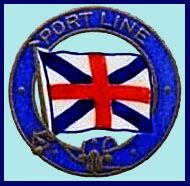
Author’s private collection
MS Port
Later names: Akrotiri Express, Daphne, Switzerland, Ocean Monarch
Currently cruising as the MV Princess Daphne
The
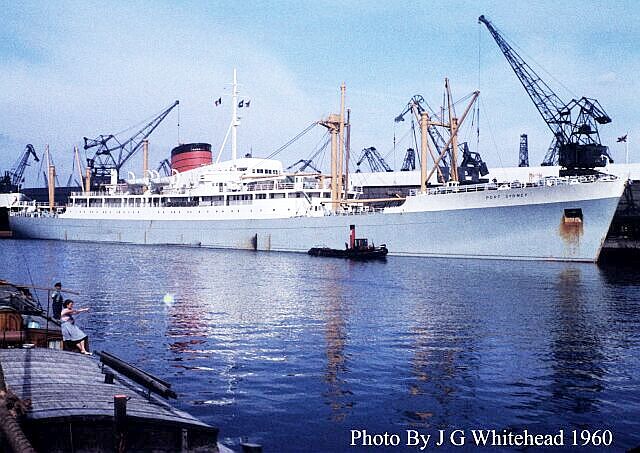
The graceful lines of Ms Port Sydney seen at
A Note by the author of ssMaritime: I am most grateful to ex senior 3rddEngineer of the Port Sydney from October 1959 to March 1960, who
also sailed on various other ships during his career, for this excellent three
webpage feature containing an excellent insight to this remarkable ship and its
daily workings. I am sure that we will all be enlightened as we delve into her
engine room as well as other facets of the ship and her daily life. If you have
sailed on her late in 1959 or the early 60’s we would love to hear from
you, especially if you were a shipmate of
All images, except for those marked
otherwise, were taken and provided by
Page One
Life
as an Engineer on MS Port
By John
Whitehead

I joined MS Port Sydney as Senior 3rd engineer in London Tilbury docks in October 1959 in order to gain enough sea time for my chief diesel endorsement ticket having sailed most of my sea time on steam driven ships with Ellerman Lines, and curiously I also sailed on the SS City of Sydney as senior 3rd engineer when this ship was involved on April 1, 1958, in the dramatic rescue of almost 1,300 people from the burning Scandinavian migrant ship MS Skaubryn, which of course is another story!
However, getting back to the MV Port
Sydney, I always had an interest in Port Line having served my five year
engineering apprenticeship with R&W Hawthorn Leslie and Co Ltd.
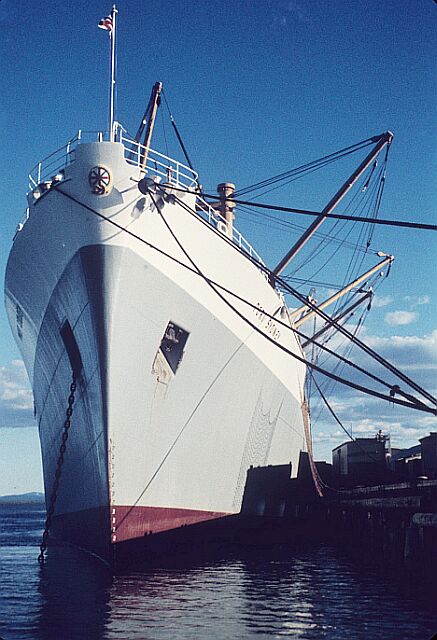
The shapely bow of the Port Sydney – taken whilst in
Yet Port Sydney, a twin screw ship, was
built in 1954 by the famed Swan Hunter & Wigham Richardson shipyards on the
Tyne, which belonged to the group that also comprised the “Wallsend
Slipway and Engineering Company Ltd,” where the engines were made under
license from “Doxford” of
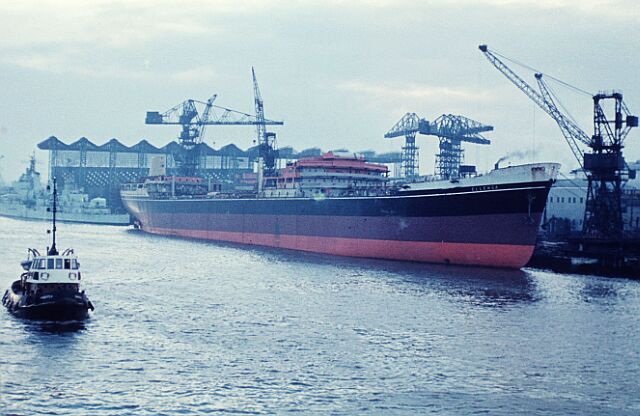
The Swan Hunter & Wigham Richardson’s shipyard at
Wallsend on
The Port Sydney engine room was extremely well managed, and when in port most of the engineers were on day work servicing and inspecting the main engines and the auxiliary plant. Usually at least one main engine cylinder would be opened up, the pistons would be withdrawn and its wear would be measured and bearing clearances checked (using thin lead wire strips which after being flattened after being squeezed between the bearing halves indicated the existing clearance) and crankshaft deflections would also be measured.
Photographs – Engine
Room
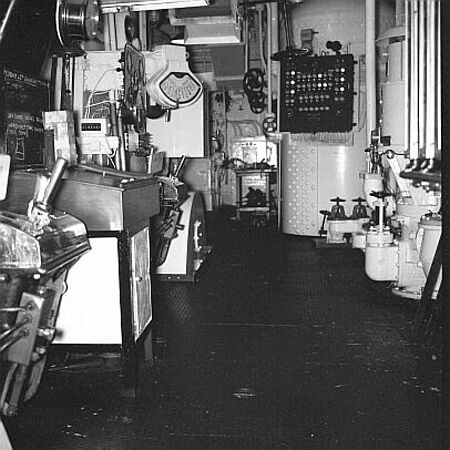
View across control the platform showing starting air
cylinder
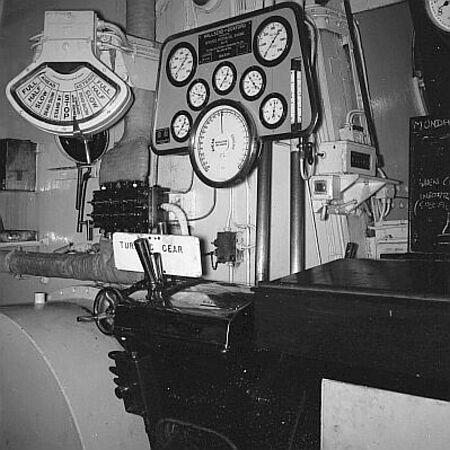
The starboard engine control platform
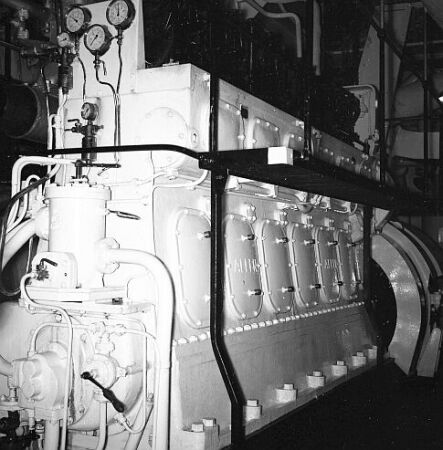
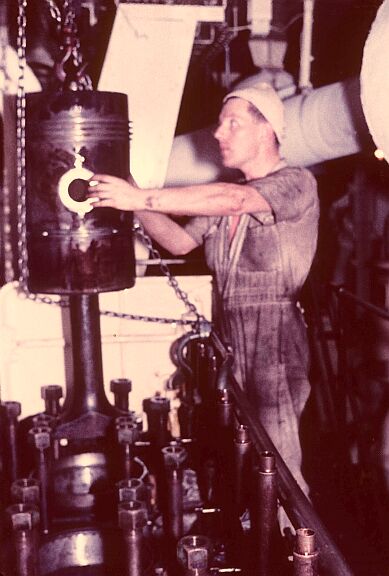
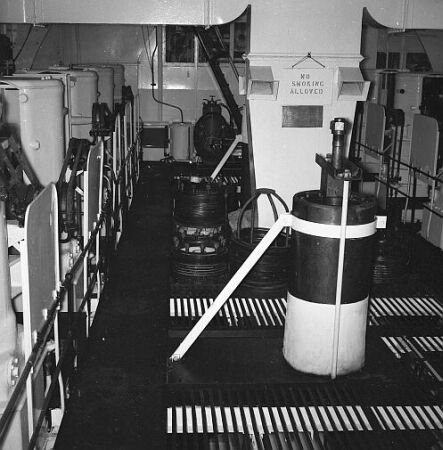
An upper platform view located between the main engines. In
the middle is a spare piston
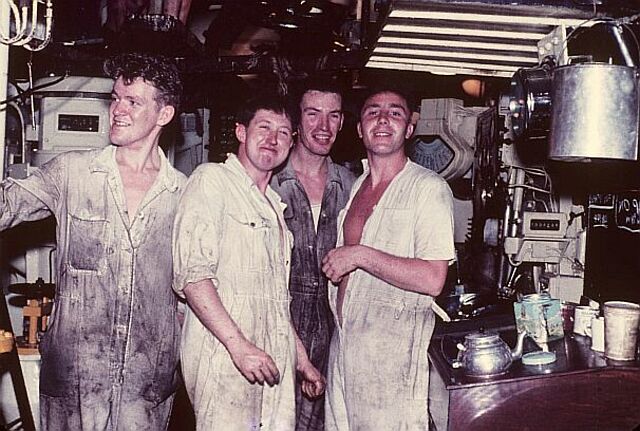
My four shipmates & Engineers having a tea
break and a laugh in the engine room
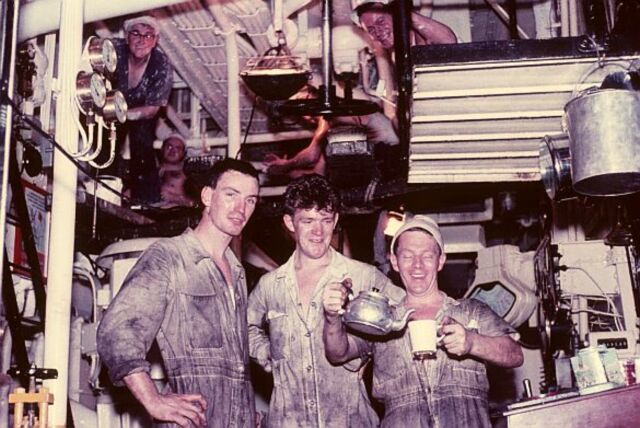
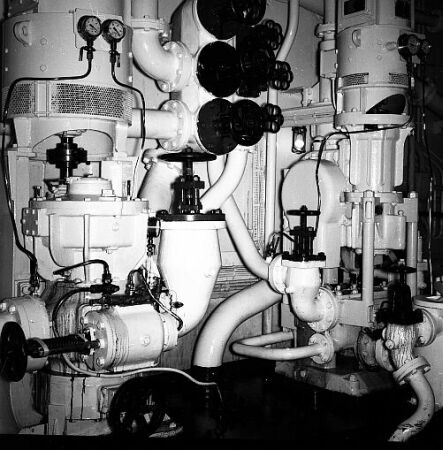
The variety of pumps and valves in the engine room
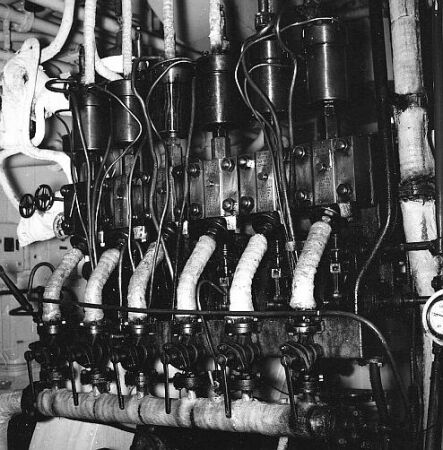
The Fuel Oil pumps operate at 6,000 lbs per sq
inch
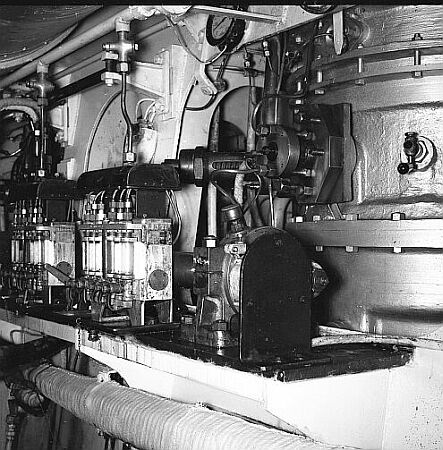
Main engine lubricators and fuel injectors
The work was heavy, but it was quite straight forward; our boiler suits needed frequent cleaning as oil seemed to get everywhere, especially after working inside the main engine casings.
There was also quite a contrast between the engine room environment and then later in the day, we were expected to be in the dinning room for our evening meal in our uniforms with clean white shirts together with the passengers, unless of course if you managed to be excused and used the engineers mess in which case it was possible to sit at a small white plastic top table for your meal in your boiler suit!
The engineers mess was a crowded small room especially when in port and all the day workers would converge for their tea break, some sitting on the deck as can be seen in the “tea break” photographs.
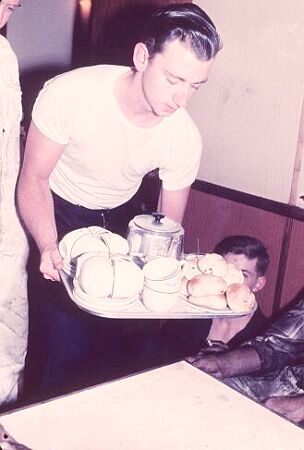
Tea is served
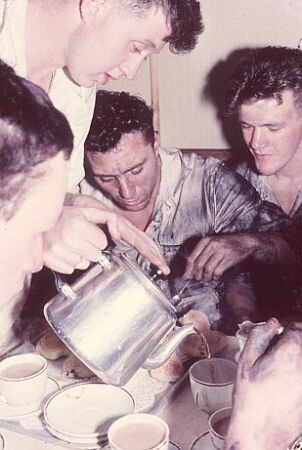
Char time means serious concentration
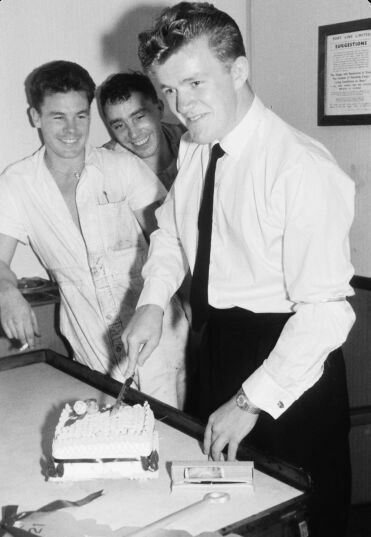
Our 5thhengineer
celebrates his 21sttBirthday at sea
Our Chief Engineer as I
recall was Mr. Linklater who tended to keep very much
to himself, and he was rarely seen away from his office, where he spent no
doubt most of his time checking the fuel and water consumption figures-etc,
thus we did not really get to know him as much as our fellow engineers. At meal
times
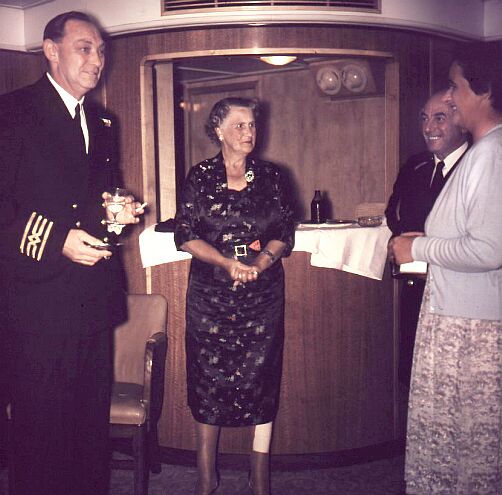
Sports deck was wide and spacious as shown in one or two of my photographs, and this encouraged the game of deck quoits with the passengers most afternoons and was frequently led by our Captain. The only problem was (if you can call it a problem) that I was one of the watch keepers in the engine room, at what you might call “odd hours” and my rest period would be at the very time they were playing, thus sleep would be frequently broken by the loud noise of the missed wooden hammer blow on the deck right above my cabin, but this was not the quoits itself! Thus, a lot of sleep would be lost.
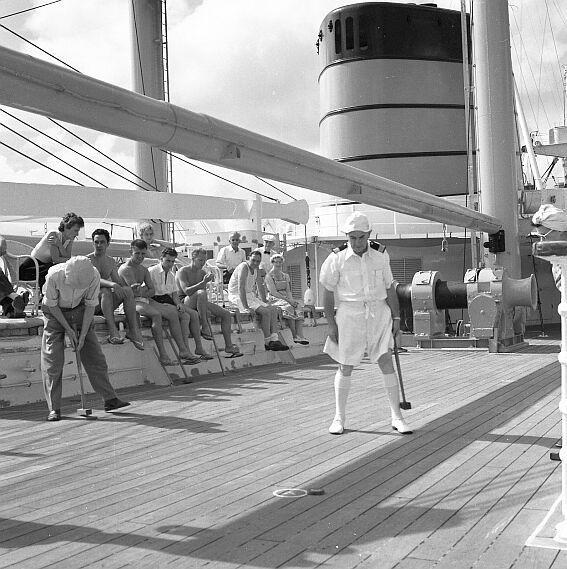
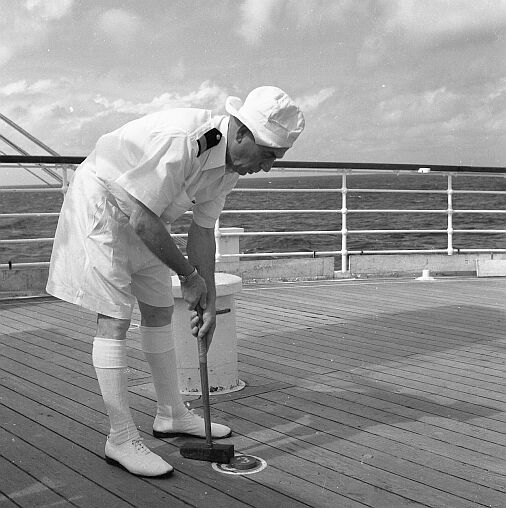
The Captain became such an
expert at deck quoits and he challenged the passengers on every voyage
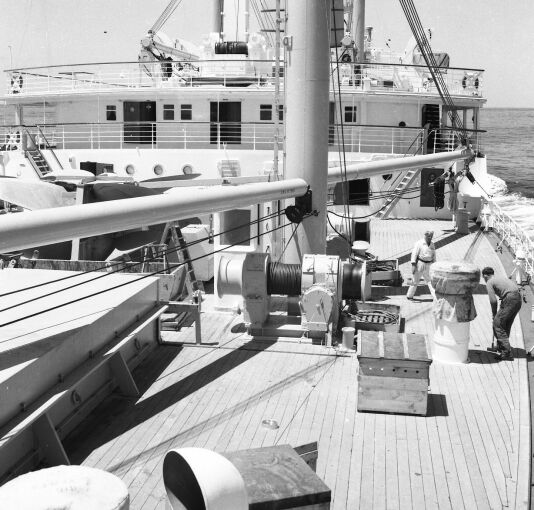
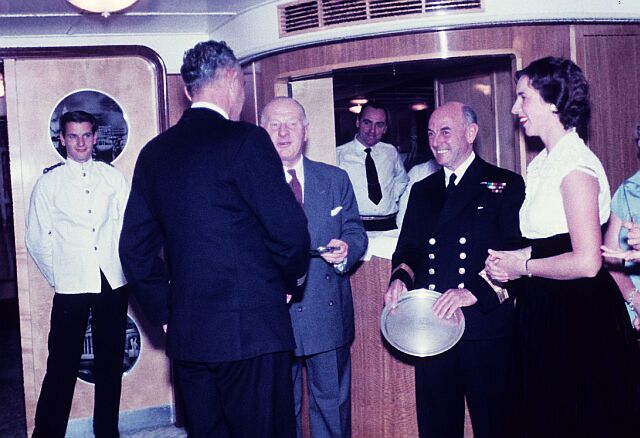

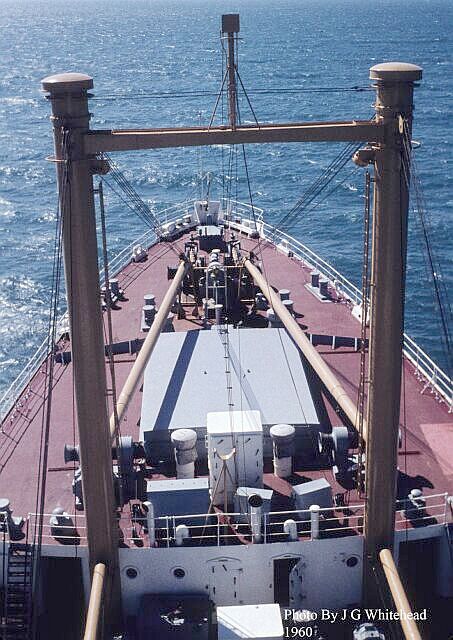
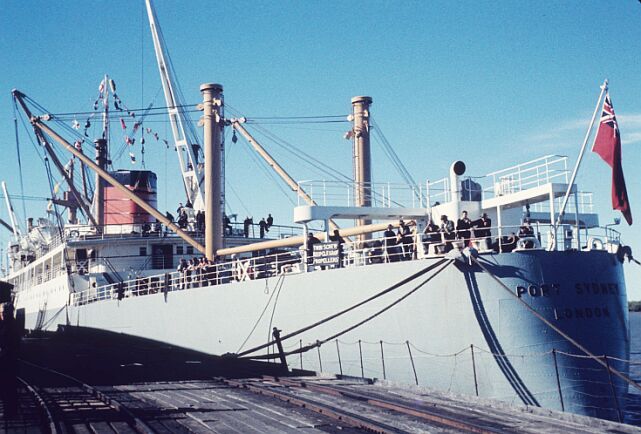
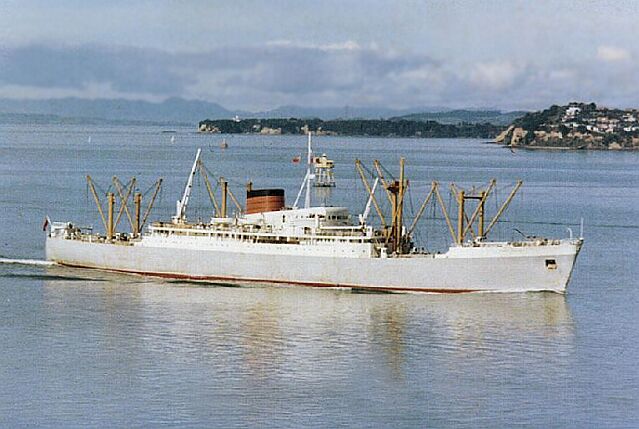
Postcard from the ssMaritime collection
Go to the John Whitehead Story - Page Two – Also
see the Port Sydney INDEX below for other pages!
*********************************
Port
Classic International Cruises
MV
Princess Daphne
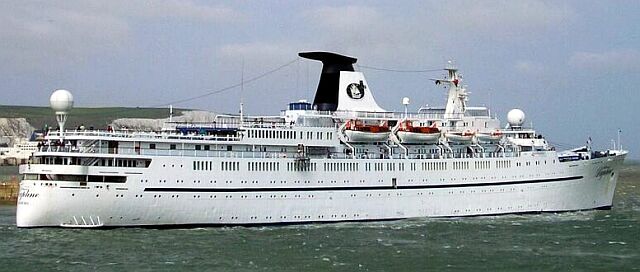
The classic ship that has become the elegant MV Princess
Daphne
From the Cruise-Australia.net collection
Part One: Read about the history of the
Port Sydney
Part Two:
Part Four
Why not Cruise on this Ship, or one of the superb Classic Ships still
sailing today
Believe me it is worth it!
**************************************************
or go to our
Who is the Author of ssMaritime?
Commenced
in the passenger Shipping Industry in May 1960
Also visit my …
“Save The Classic Liners Campaign” & “Classic Ocean Voyages”
This notice covers all
pages, although, and I have done my best to ensure that all photographs are
duly credited and that this notice is displaced on each page, that is, when a
page is updated!
